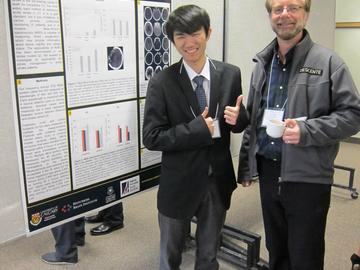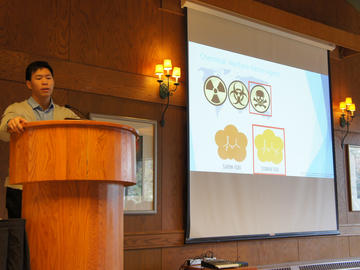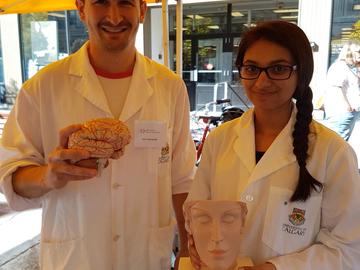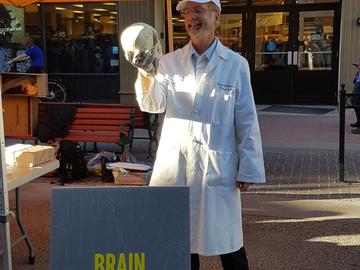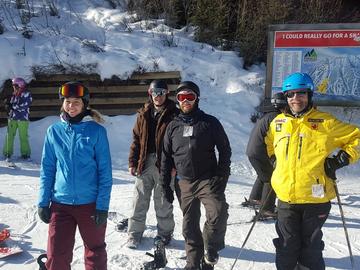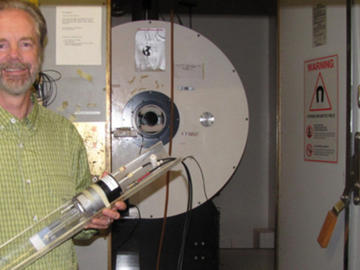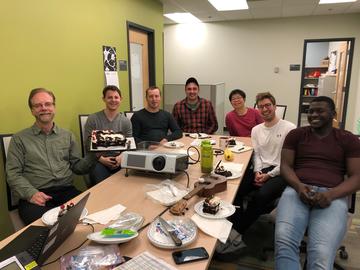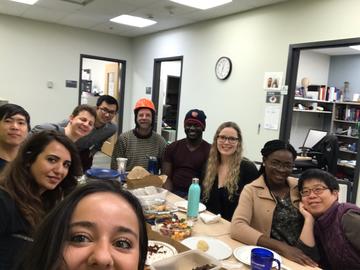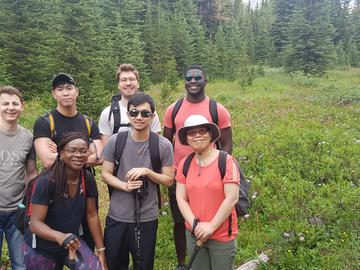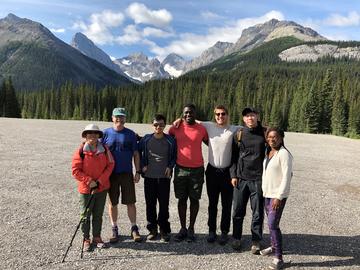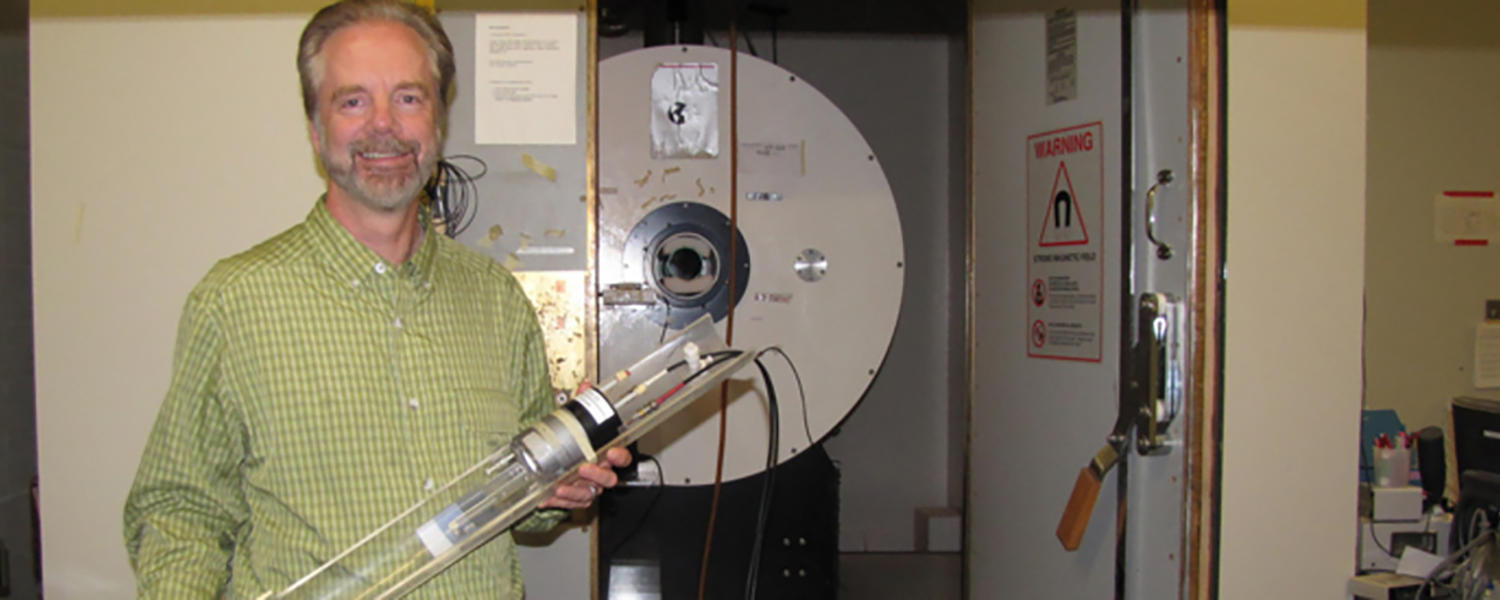
Welcome to Dunn Lab
Our research involves high field MRI and optical technologies (NIRS) for use in animal and human studies. We do work in brain and neuroscience, but also perform musculoskeletal imaging. Feel free to look around to learn more about the Dunn Lab Team.
About Us
Our lab's research focus is on NMR/MRI and optical imaging technology. We study problems related to hypoxia, which include multiple sclerosis, epilepsy and cancer. In addition, we use various optical imaging modalities to study concussion.
We also develop new imaging techniques, including methods for assessing the physiology and biomechanics of cartilage, looking at cerebral blood volume imaging methods, developing high resolution MRI methods and undertaking multimodality studies using near-infrared and MRI.
Specifically, the laboratory is a small dynamic group with a shared interest in both technology and applications. As for technology, we use NMR/MRI as well as optical imaging. The Experimental imaging centre has a 9.4T Bruker MRIM. We have links to the Seaman Family MR centre with a 3T whole body MRI and to the Stephensons Cardiac Centre with a 1.5T Siemens system. We are also working with the National Research Council of Canada to develop a 0.2T MRI for clinical use. We have optical imaging hardware including the NIRO-200, the CW5 from Techen (and David Boas) and the ISS spectrometer.

Animal Research
Ongoing studies

Human Research
Ongoing studies
Ongoing studies
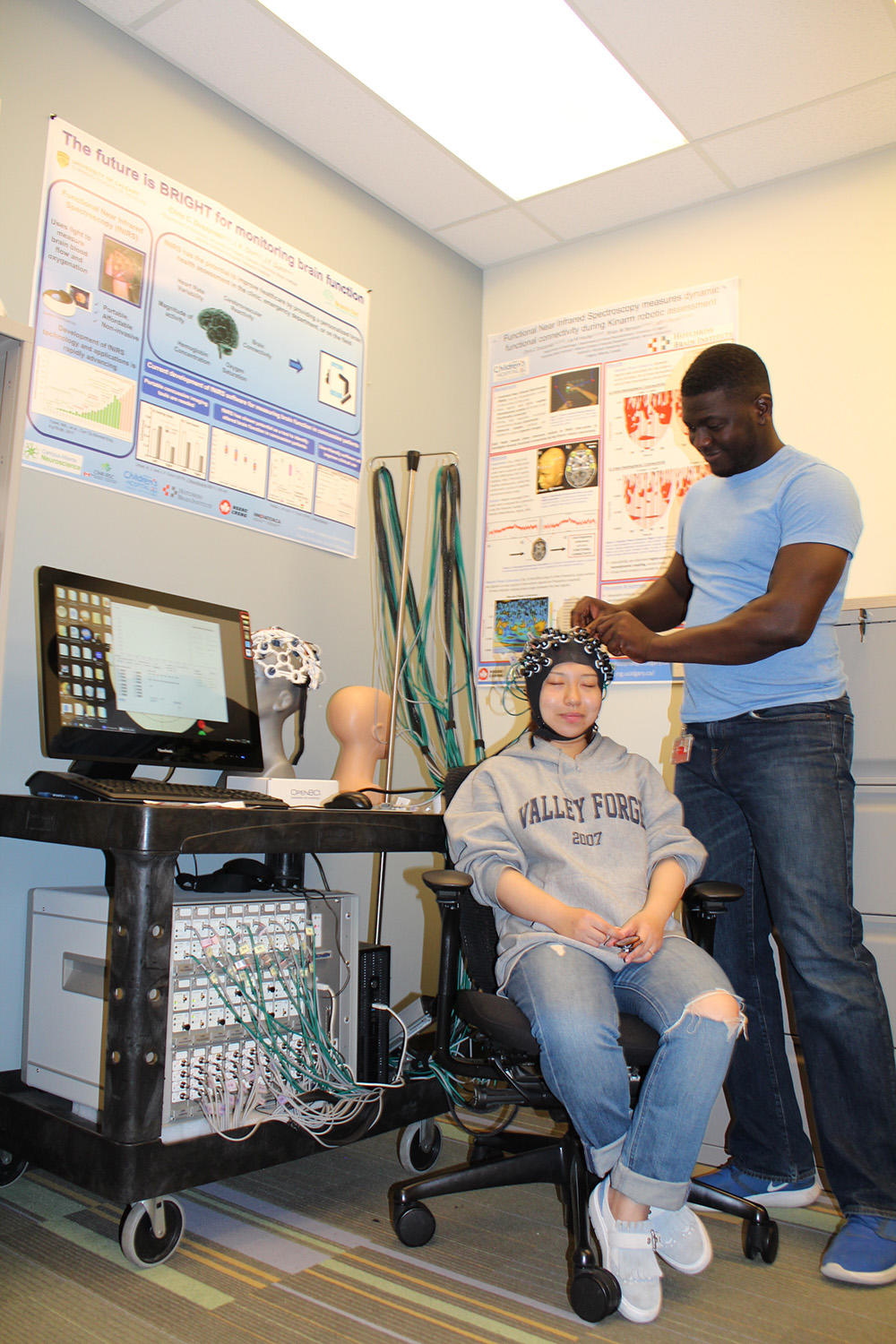
Our Team

Professor Jeff Dunn
I have developed programs to measure oxygen in both animal models and patient populations of MS, stroke and epilepsy. I developed the implantable, MRI compatible PO2 probe, an implantable electrode compatible with the 9.4T MRI and the capacity to do multimodal NIRS/MRI on rat and mouse models.

David Rushforth
Technical operations manager –Experimental imaging center (EIC). Provides organizational, administrative and technical support for animal experiments and responsible for general operations surrounding the 9.4t MR in the EIC.
Dr Tadeusz Foniok
Is a MR expert and Bruker console operator
Dr Ying Wu
Main interest is in apply imaging methods to animal research. Skilled in electrophysiological and behavioral methods, and my work focuses on using animal models to study brain oxygenation, performing surgeries, behavior testing and histology.

Dr Andrew Lapointe
Andrew is a post-doctoral fellow within the Department of Radiology and Cummings School of Medicine at the University of Calgary. His postdoctoral research focuses on utilizing two mobile, non-invasive brain imaging methods: Near-Infrared Spectroscopy (fNIRS) and Electroencephalography (EEG). His upcoming CIHR-funded project hopes to determine the utility of both of these neuroimaging methods in the study of pediatric concussion.
Dr Damilola Adingupu
I have experience in clinical and pre-clinical research in cardiovascular disease. Some of my specialties include cardiovascular physiology, biomedical science, histology and using non-invasive imaging techniques to investigate the circulation. My current work focuses on investigating hypoxia and inflammation in Multiple Sclerosis using NIRS.

Chris Duszynski
Chris is very passionate about the issue of concussions in athletics and is doing a PhD studying Pediatric Traumatic Brain Injury. Away from the lab, he spends his free time enjoying many of the outdoor activities that we are fortunate to have near Calgary such as fishing, hiking, rafting, camping, and hunting.

Ibukun Oni
Ibukun is a Biomedical Engineering PhD student. His research involves developing and applying a multimodal functional neuroimaging system to monitor brain injury and its recovery in patients with mild Traumatic Brain Injury (mTBI). He uses functional Near-Infrared Spectroscopy (fNIRS) and Electroencephalography (EEG) to this effect. The goal of his research is to determine if the combination of measurements from these modalities would better distinguish between mTBI patients and controls than any of the modalities alone.
Taelor Evans
Taelor completed her BSc in Health Sciences at Mount Royal University in 2018 and is now working towards her Master’s in Neuroscience. Her thesis project focus is exploring the interplay between brain hypoxia and multiple sclerosis disease progression. Outside of the lab, Taelor keeps herself involved in the MS community. She is a member of both the MS Society Council and Bike Tour Committee. In her spare time, Taelor enjoys hiking and playing with her young nieces and nephews.
Max Hamilton
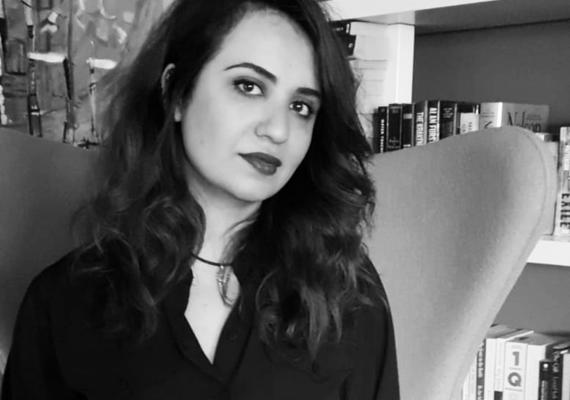
Mada Hashem
Mada is a Ph.D. candidate in the Biomedical Engineering Graduate program (U of C).
She received her MS.c in Chemistry and her BS.c in Molecular Biochemistry at the Technion Institute of Technology.
Her current research focuses on developing a multimodal NIRS-MRI technique to non-invasively monitor cerebral oxidative metabolism in mouse models of neurological disorders. Employing this multimodal technique will enable the investigation of multiple metabolic correlates simultaneously, such as hemodynamics, tissue oxygen saturation, cerebral consumption rate for oxygen, in addition to the redox state of the enzyme Cytochrome C Oxidase as a marker of mitochondrial capacity. All these measurements make it possible to get a comprehensive picture of the cerebral metabolic changes occurring in the brain in health and disease.
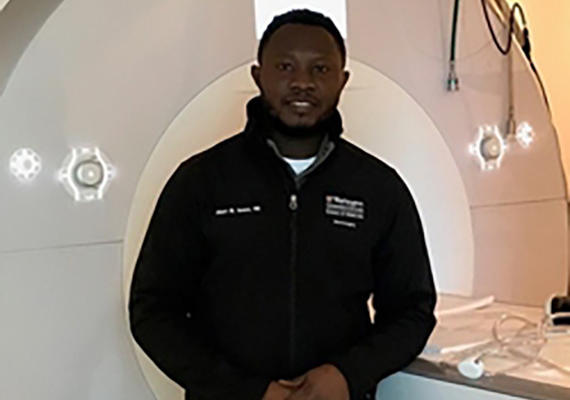
Dr (MD) Albert Isaacs
Dr. Isaacs is a 4th year neurosurgery resident here at the University of Calgary, who, throughout his training has cared for many babies afflicted with PHH (post-hemorrhagic hydrocephalus). This occurs in one out of every three babies who are born prematurely and sustain spontaneous bleeding into their brain. Dr. Isaacs has now taken a leave of absence from clinical duties in order to pursue a PhD in neuroscience, focusing on understanding the causes of PHH. He has developed animal models of PHH in mice that is been used to study the role of oxidative metabolism in the pathophysiology of hydrocephalus, utilizing the 9.4T MRI in the Experimental Imaging Centre at the University of Calgary.

Kevin Lee
Kevin was born in Aachen, Germany where he lived for 9 years. He then moved and lived in South Korea for 3 and has since been living in Calgary where he completed his Bsc in biological sciences. He is now doing a PhD neuroscience, and his research involves observing the neurological insults of neurotoxins in animal models using MRI. His favorite activities and hobbies include swimming, scuba diving and reading.
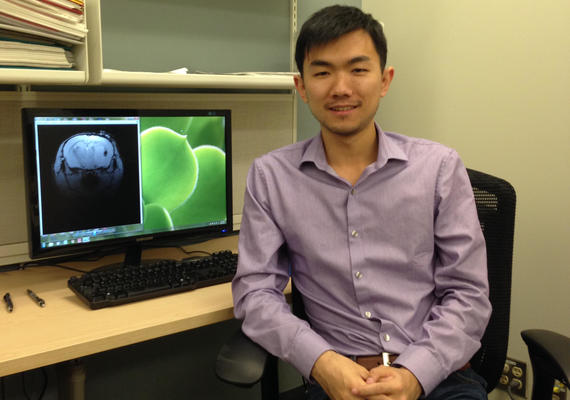
Runze Yang
Runze obtained his BSc at the University of Alberta and is currently in the MD/PhD program, doing the PhD portion of his training in Neuroscience. His current research focuses on applying MRI methods to detect the treatment response of immunotherapy in brain cancer. Runze is also the current chair of the GSA Academic Standing Committee. In his free time, he enjoys going on hikes, reading detective novels and watching action movies.
BSc students getting hands on experience in Research
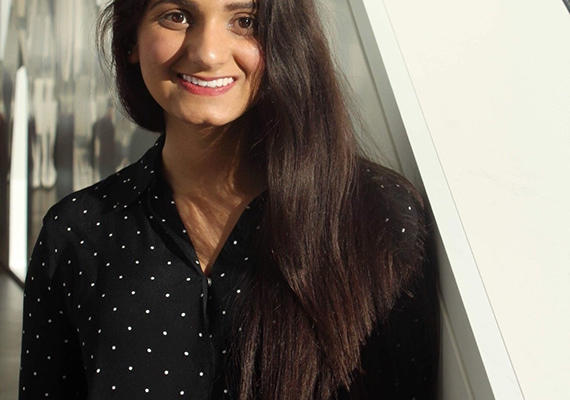
Qandeel Shafqat
Qandeel is a third year student working towards a BSc in Biological Sciences. She joined Dr. Jeff Dunn's lab in 2016, and has since had the opportunity to assist with studies on brain injury, neurotoxins, and multiple sclerosis. Her current project focuses on using MRI and NIRS imaging to understand the hypoxia-inflammation cycle in multiple sclerosis.
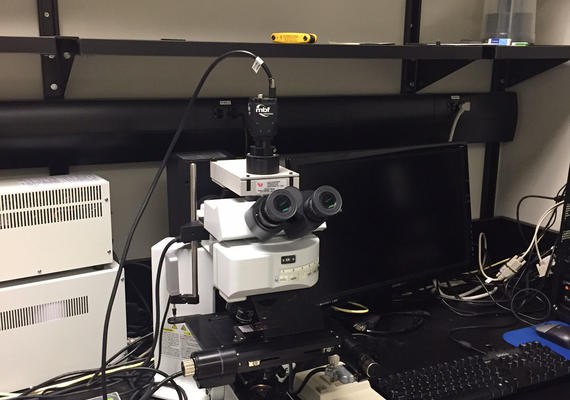
Matthew Bouchard

Carter Randall
Carter is enrolled in a pure mathematics and physics double major with a concentration in nanoscience at the UofC. He has been working on a fNIRS (functional near-infrared spectroscopy) data processing pipeline for the past two summers.
Qingfei Wang
Dunn Lab Alumni
Where are they now?
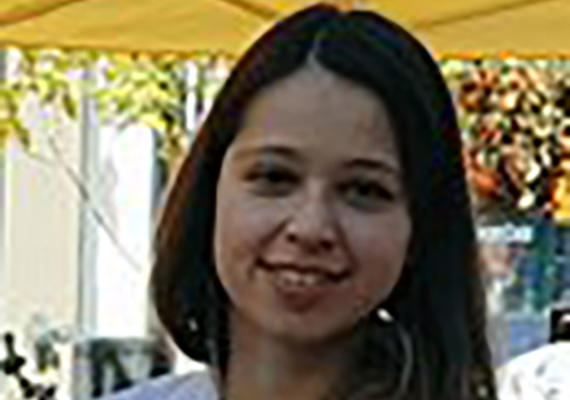
Maria Beketskaia
Worked as a senior laboratory analyst at Bio-Chem Consulting Services Ltd, after completing a BSc and Master's degree at the University of Calgary. Maria returned to the University of Calgary as a Research Associate at the Dunn lad where she worked for 3 years before moving on to the Surgery department at the Cumming School of Medicine as a Research Program Facilitator.
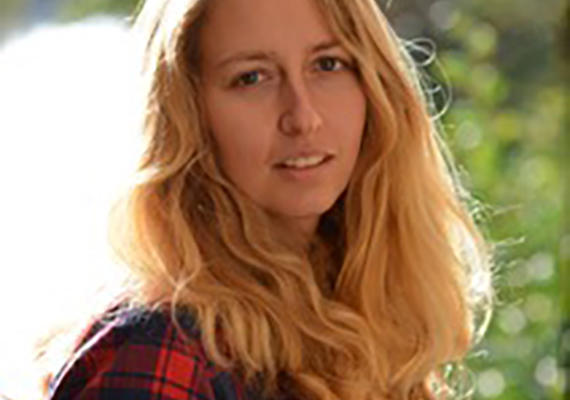
Dr Lia Hocke
Lia Maria Hocke did a Postdoc with Dr. Jeffrey Dunn, in concussion research with functional Near-Infrared Spectroscopy (fNIRS). She received her PhD in Biomedical Engineering at Tufts University in 2015 and studied Psychology and Cognitive & Clinical Neuroscience at the University of Maastricht in the Netherlands. Since 2010, she worked under the supervision of Dr. Frederick and Dr. Tong at McLean Hospital (Opto-magnetic Group), as part of her Research Masters and her PhD. She established theoretical and methodological research skills in the field of fNIRS, including optimization of acquisition (development of fMRI-compatible NIRS probes) and analysis (MATLAB, FSL & SPM) of fNIRS data, on its own and with concurrent fMRI.
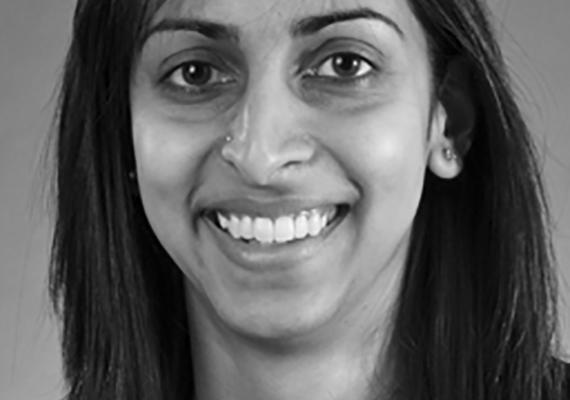
Dr Nabeela Nathoo
Nabeela was born and raised in Calgary. She completed her BSc in Biological Sciences at the University of Calgary in 2009, and a MD/PhD program at the University of Calgary with her PhD in Neuroscience. Her thesis project focused on characterizing susceptibility weighted imaging (SWI) in the experimental autoimmune encephalomyelitis (EAE) mouse model of multiple sclerosis (MS) to investigate the venous vasculature and iron deposition. Dr Nathoo is now a Neurology Resident Physician at the University of Alberta.
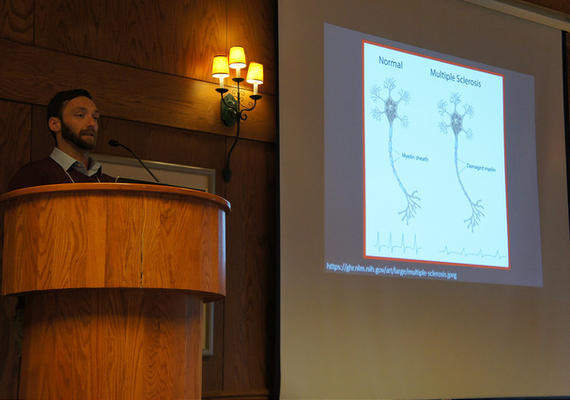
Dr Thomas Johnson
Thomas has a background in Neuroscience and Physics, having done his undergraduate education at UVic and UBC. He completed a Ph.D. in Biomedical Engineering at the Dunn lab. His research focused on imaging metabolism in the EAE mouse model of multiple sclerosis. To achieve this, near-infrared spectroscopy and magnetic resonance imaging were applied simultaneously, giving a unique combination of imaging modalities. His overall career interests are in developing new imaging techniques to diagnose and monitor neurological and psychiatric disorders in humans. Dr Johnson is now at School of Medicine University of Rochester USA.
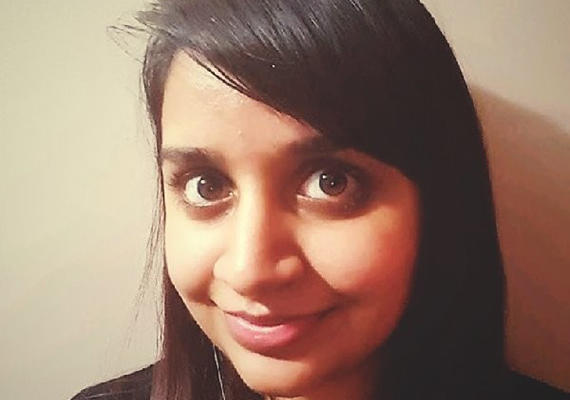
Raveena Dhaliwal
Raveena did a Masters degree in Neuroscience at Dunn lab at the University of Calgary and has remained at the University of Calgary as a Medical Laboratory Technician.
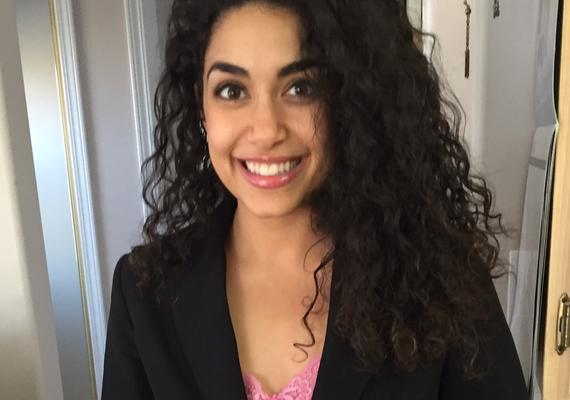
Diane Dleikan
Diane Dleikan is originally from Red Deer, AB. She received her Bachelor of Science in Kinesiology degree from the University of Alberta and completed a Master of Science in Neuroscience with a specialization in concussion pathophysiology from the Dunn Lab, University of Calgary. Diane is now a Lecturer at the Faculty of Health, Community and Education, Health and Physical Education Mount Royal University.
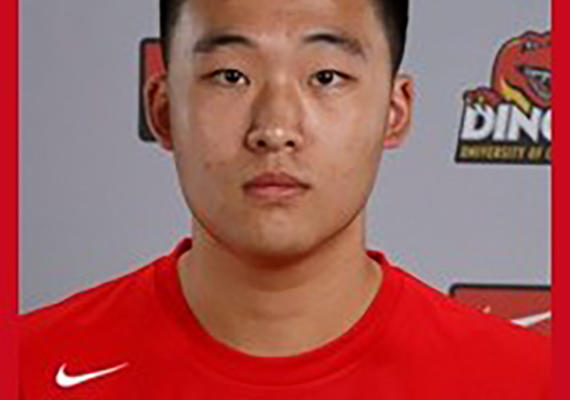
Simon Chen
Simon completed the Health Sciences program at the University of Calgary in the Biomedical Sciences major. He was a summer student at the Dunn lab for two summers working on electron microscopy. Volleyball is a sport that Simon is really passionate about and has been playing since the age of 13. He has played with various clubs in Calgary and trained with both the Alberta provincial team and provincial teams in China. Simon is now at the Columbia University in the City of New York for his graduate studies.
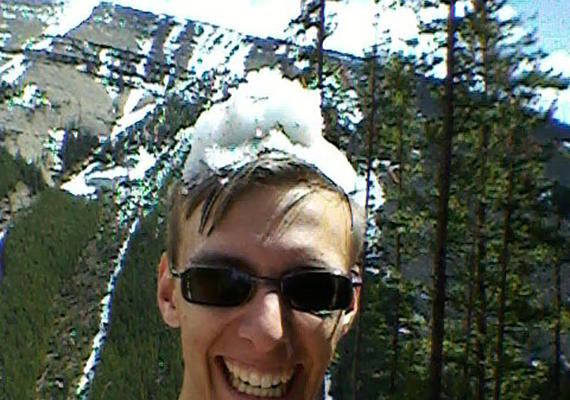
Daniel Korchinski
Daniel Korchinski was born here in Calgary. His interests are nearly as broad as his travel “must visit” list is long, and includes literature, history, robotics, metaphysics, clean energy, etymology, quantum cryptography, as well as pretty much everything he can get his hands on. He’s tried his athleticism at soccer, canoeing, kayaking, basketball, squash, swimming, skiing, air-chairing, water-skiing, snorkeling, scuba diving, cliff-diving, knee-boarding, cycling, windsurfing, long-boarding, cross country, hiking, scrambling, climbing, and all manners of mountaineering. His other hobbies include chess, competitive starcraft, painting (poorly), and writing. Daniel thrives on novelty which only encourages his insatiable curiosity. However his love of learning is matched only by his enjoyment derived from teaching; Daniel has taught Physics AP at his high school, provided lectures on introductory Calculus, given talks on succeeding in university, and provided course series on programming. Daniel’s passion for instruction and discovery stem from his natural inclination towards curiosity and his hope to leave the world better than he entered it. Danile was a summer student at the Dunn lab, with his project focusing on Magnetic resonance Imaging. Daniel is now a graduate student working under Jorn Davidsen. Studying neuronal avalanches in silico in the complexity science group at the UofC.
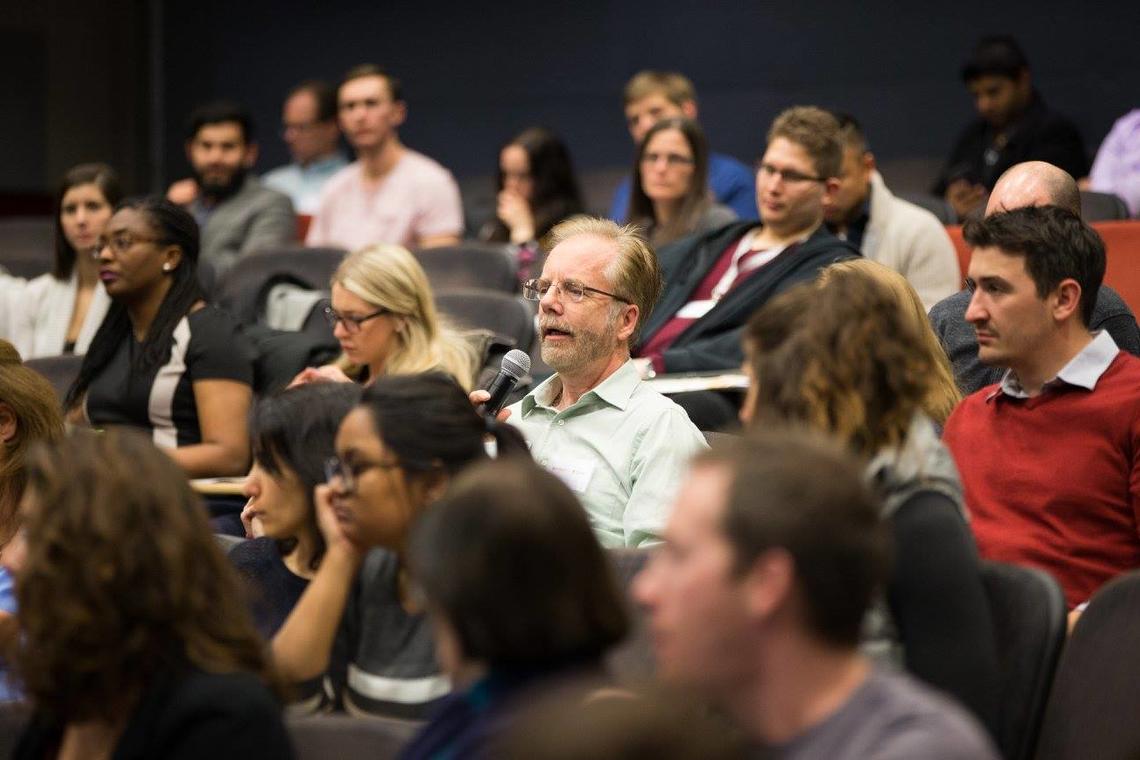
Contact US
Professor, Department of Radiology
Adjunct Professor, Departments of Clinical Neuroscience, Physiology and Pharmacology Director, Experimental Imaging Centre
EIC, Level P2E
Teaching, Research and Wellness Building (TRW)
University of Calgary, Faculty of Medicine
3280 Hospital Drive NW
Calgary, AB T2N 4Z6
CANADA
E-Mail: dunnj@ucalgary.ca
Phone: 403-210-3886


